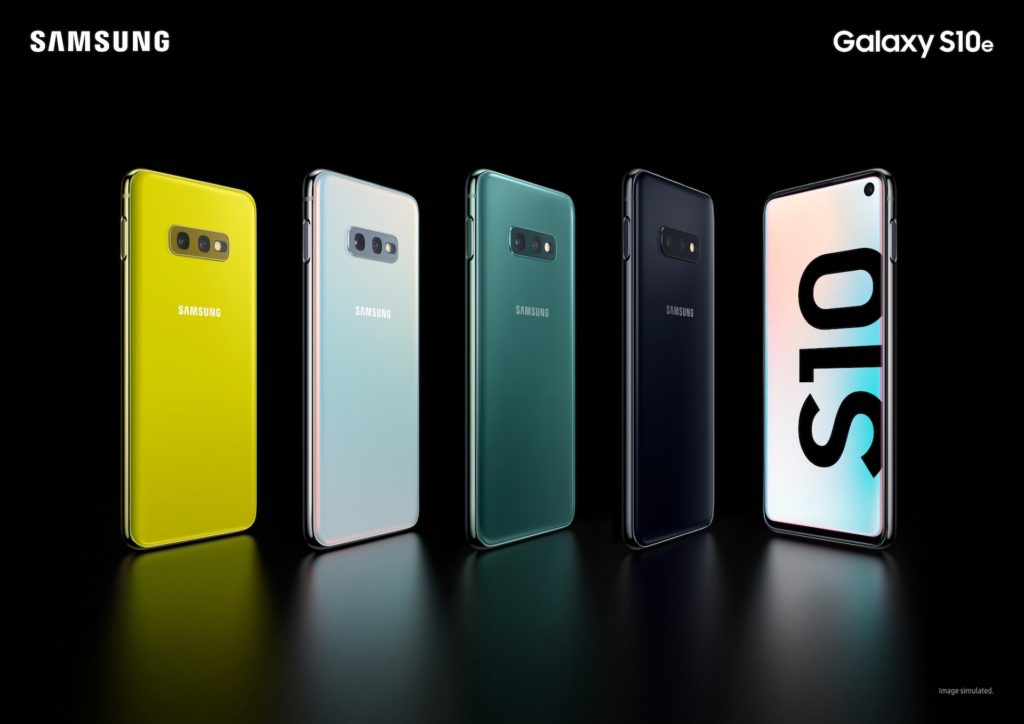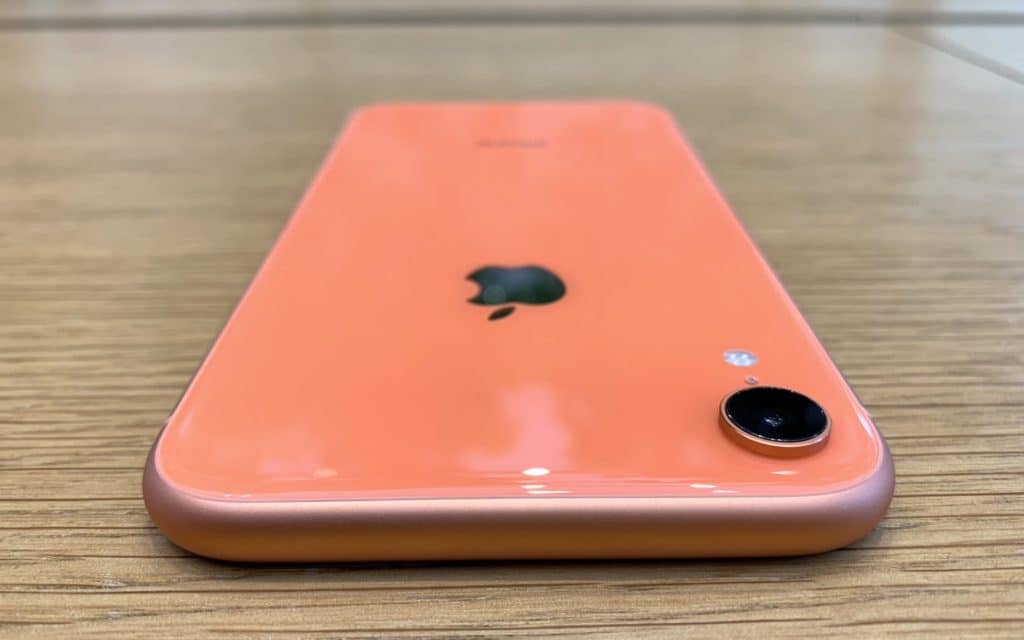
The Samsung Galaxy S10 takes on the iPhone XS in Apple’s iPhone lineup with its specs and pricing. However, Samsung phones are known to get some pretty sweet discounts within weeks of their launch and a similar story is going to play out here as well. This means the Galaxy S10 will end up giving the iPhone XR a run for its money. And that makes for an interesting comparison.
How does the iPhone XR fare against the Galaxy S10? Find out in our comparison.
Galaxy S10 vs iPhone XR Comparison: How Are They Different?
Design

In the design department, the Galaxy S10 is the clear winner. Unlike the iPhone XR which features a notch and sizeable bezels around its display, the Galaxy S10 features an Infinity-O display along with minimal bezels around its display. So, while the iPhone XR does have a bezel-less look, it does not look as futuristic as the Galaxy S10.
The iPhone XR is available in more colors than the Galaxy S10 but the latter looks better despite its limited color options. The Galaxy S10 also comes with a higher IP68 certification when compared to the iPhone XR’s IP67 certification. The warranty of both phones does not include water damage though.
Display
- iPhone XR – 6.1-inch Liquid Retina LCD, 1,792×828 pixel
- Galaxy S10 – 6.1-inch curved Infinity-O Dynamic AMOLED, 1440 x 3040 pixels (550ppi), HDR10, Dynamic AMOLED
Another area where the Galaxy S10 is the clear winner. The AMOLED panel on the Galaxy S10 features a higher resolution, supports HDR10, and its capable of reaching luminance levels of 1200nits. Plus, being an AMOLED panel, it offers better contrast, viewing angles, and vividness. The iPhone XR’s LCD panel is good but its nowhere near close to the panel found on the Galaxy S10.
Chipset
- iPhone XR – 7nm A12 Bionic chipset
- Galaxy S10 – 7nm Snapdragon 855 or 8nm Exynos 9820
This is the only area where the iPhone XR is able to give some competition to the Galaxy S10.
The Galaxy S10 comes with a 7nm Snapdragon 855 chipset in the U.S. or an 8nm Exynos 9820 chipset in rest of the world. While the new Snapdragon 855 chip offers major performance improvement and is a massive step up in terms of efficiency as well, it is simply not as powerful as Apple’s A12 Bionic chip. That all boils down to Apple’s excellent chip designing team that has been setting the benchmark for quite a few years with their mobile chips.
The Snapdragon 855 does feature a more powerful Adreno 640 GPU but all that power is irrelevant because Android simply does not have the same high-quality games as iOS.

Camera
- iPhone XR – 12MP camera with f/1.8 aperture, 1.4um pixel pitch, OIS, Smart HDR, Focus Pixels, Portrait mode with advanced bokeh
- Galaxy S10 – Triple-camera setup, Primary 12MP camera with variable f/1.5 and f/2.4 aperture, 1.4um pitch pixel, OIS; Secondary 16MP f/2.2 ultra-wide angle shooter; Third 12MP f/2.4 telephoto sensor with OIS, 2x optical zoom, Auto HDR, Super Speed Dual Pixel, Live Focus with adjustable bokeh effect
The iPhone XR comes with a single camera at its rear. The Galaxy S10 comes with three cameras at its rear! While the primary camera performance of the two devices might be within 5-10 percent of each other, the Galaxy S10 ends up being the more versatile shooter because of its triple-camera setup. Apart from a 2x telephoto sensor, it also comes with a 16MP f/2.2 ultra-wide angle shooter that can come in useful for capturing landscapes.
At the front, the Galaxy S10 features a 10MP f/1.9 aperture selfie shooter while the iPhone XR features a 7MP TrueDepth camera. The S10’s improved selfie sensor is able to take better photos, especially in low-light. And it is also the world’s first phone to capture 4K videos from the front camera.

Storage
- iPhone XR – 64GB, 128GB, 256GB
- Galaxy S10 – 128GB, 512GB, microSD card slot
The base iPhone XR ships with 64GB storage while the base Galaxy S10 comes with twice the amount of storage at 128GB. In a similar fashion, the Galaxy S10 comes with 6GB RAM — twice of the 3GB RAM the iPhone XR ships with. In terms of storage and RAM, the Galaxy S10 simply offers more from a value perspective. The additional RAM will ensure the Galaxy S10 is a notably better multitasker than the iPhone XR especially when pushed hard.
Biometrics
- iPhone XR – Face ID
- Galaxy S10 – In-display fingerprint scanner, Face unlock
Apple is the only company that has completely done away with fingerprint sensors on its devices. The iPhone XR solely relies on Face ID and while it has become slightly faster in its second year, it is still nowhere near as good or as fast as second-generation Touch ID.
Samsung offers the best of both worlds on the Galaxy S10 by offering face unlock as well as an in-display fingerprint sensor.
Unlike Face ID, face unlock on the Galaxy S10 is notably faster, though it does so by compromising security. There is also an ultrasonic in-display fingerprint sensor. It is not as fast as the fingerprint sensor found on the Galaxy Note 9 or the OnePlus 6 but then, having a fingerprint sensor is better than not having one at all.
Connectivity
- iPhone XR – Dual SIM/eSIM, LTE, Wi-Fi ac with MIMO, Bluetooth 5.0, VoLTE, NFC with reader mode
- Galaxy S10e – Dual SIM, 2Gbps LTE, Wi-Fi 6, Bluetooth 5.0, VoLTE, NFC, 3.5mm headphone jack
Another area where the Galaxy S10 simply obliterates the iPhone XR. The device comes with an LTE modem that’s capable of reaching download speeds of 2Gbps and features other advanced connectivity features like Wi-Fi 6 and Intelligent Wi-Fi for improved network performance.
The iPhone XR is simply nowhere as good. It does not even support Gigabit LTE like the iPhone XS. And that has a major difference in mobile data speeds. Plus, in areas with spotty network reception, the Galaxy S10e will fare far better than the iPhone XR.
Plus, the Galaxy S10 comes with a headphone jack which the iPhone XR lacks.
Battery
The iPhone XR comes with a 2,942mAh battery, while the Galaxy S10 comes with a bigger 3,400mAh battery. Despite that though, its the iPhone XR which will offer better battery life than the Galaxy S10. That’s because it comes with an LCD display that is simply not as power hungry as the OLED display of the Galaxy S10. If you value battery life, you should consider the iPhone XR.
The Galaxy S10 does win in terms of charging times. While Samsung has not improved the wired charging speeds, it does at least ship the phone with a 15W power adapter compared to the paltry 5W charger that Apple ships with the iPhone XS.
Both phones also support Qi wireless charging but the Galaxy S10 again wins here since it can charge at 12W wirelessly. That’s quite a bit faster than the 7.5W limit of the 2019 iPhones.
The Galaxy S10 also features reverse wireless charging a.k.a Wireless PowerShare which one can use to charge their Galaxy buds or other similar accessories featuring wireless charging. While the feature can also be used to charge other phones wirelessly, that’s a bit impractical since it would end up completely draining the battery of the phone itself.
Price
- iPhone XR – $749
- Galaxy S10 – $899
The Galaxy S10 costs $150 more than the iPhone XR. That’s likely going to be a deal breaker for many. However, with the Galaxy S10, Samsung is bundling Galaxy buds worth $129 in most markets. If you don’t want the buds, you can easily sell it off for around $80-90 and reduce the total blow to your pocket. Or if you can wait for a few weeks, Samsung and other retailers will end up discounting the Galaxy S10 to around $700 at which point buying it would be an absolute no-brainer over the iPhone XR.
Ultimately, the iPhone XR sits a level below the Galaxy S10 and that’s evident from this comparison as well. The iPhone XR ideally competes with the Galaxy S10e which also carries the same $749 price tag.
What are your thoughts on the Galaxy S10? Do you plan on buying it?